Consider this blog the Zero Waste Bystander prequel. I had not yet heard of “Zero Waste”, had never bought a mason jar before. Instead I was stuck feeling ashamed of how much waste I created on a day-to-day basis with no idea how to cut back other than taking shorter showers or walking to the grocery store. I was not yet living in a city where outdoor recreation and alternative modes of transportation are common if not expected.
At this time, I was also driving a ’94 Ford Mustang. While I did get a thrill driving a sports car on the 12 days a year the weather was nice enough to drive with the top down, the car was a huge hassle. Parts were constantly breaking or falling off, it got horrible mileage, the roof leaked, and the tires seemed to pop every other month.
One day, the drive belt fell off on my way home from work. While waiting for my mechanic-in-shining-armor to meet me at the nearest gas station, I decided then and there to find another way to commute.
Safe at home, I Googled other transportation options, only to learn that since I worked in St. Charles and lived in St. Louis (across the Missouri River), none of the buses connected. I didn’t live close to any of my coworkers at the time, so carpooling was out of the question.
It seemed my only option was to bike.
Google Maps’s bike route estimated about two hours of biking would get me from my apartment to work with a steady incline there and a steady decline back. Not a bad situation: the incline would wake me up in the morning and at the end of the day I could cruise back home. I was a morning person. Unlike paying for the bus or gas, biking was free. I had a bike back at my parents. All was looking bright.
I got my bike in elementary school.
It was my first and only mountain bike with twelve gears and upon further inspection made out of wrought iron. While I hadn’t grown much since age 11 and therefore the size wasn’t an issue, I wasn’t prepared for how bad of shape the bike was in. Or how bad of shape I was in.
After buying new brakes and tires, I did a test run on a weekend during pretty good weather. I expected it to take me about twice as long to get to work considering my experience and traffic.
I got a little under halfway there before I called it. The biggest problems were (1.) my bike seat wouldn’t stay up so I was riding a bike a foot too short for my legs and (2.) The bike lane ended and was too nervous to take on St. Louis traffic without a buffer.
I needed a new plan, one that would allow me to work my way up to biking all the way from my home to work without killing me on the way there.
I decided to try my hand at the last third of the trip, which was 99% bike trail and had a convenient parking lot where I could leave my car during the day. This brings me to one of the biggest perks of my experience: I had no flippin idea that there were so many bike trails around St. Louis that actually got you places. In my head, bike trails were just an activity you did on weekends if you were looking to get exercise in a pretty setting. They didn’t actually help you get from point A to point B.
The Katy Trail connector is–compared to the greater Katy Trail–a tiny spit of paved biking from a park in St. Louis County across the Missouri River to the Katy Trail in St. Charles (approximately where my work was located). Every day that I didn’t have a meeting and the weather promised to be dry, I drove to the park with my Wal-Mart bike hitched to the back. I gave myself an hour and a half before work started. If my first test run had taught me anything, it was that Google’s estimate for how long it takes to get to somewhere by bike assumes you’re in incredible shape and your bike is nice enough to get to twenty miles an hour without disintegrating. Leaving so early assured that I could take my time for water breaks, to catch my breath, and to have it taken away again by the incredible scenery.
Without fail, every single morning felt like a dream.
I never could have imagined how gorgeous the Missouri marshlands could be–or that there were marshlands at all right under the highway.
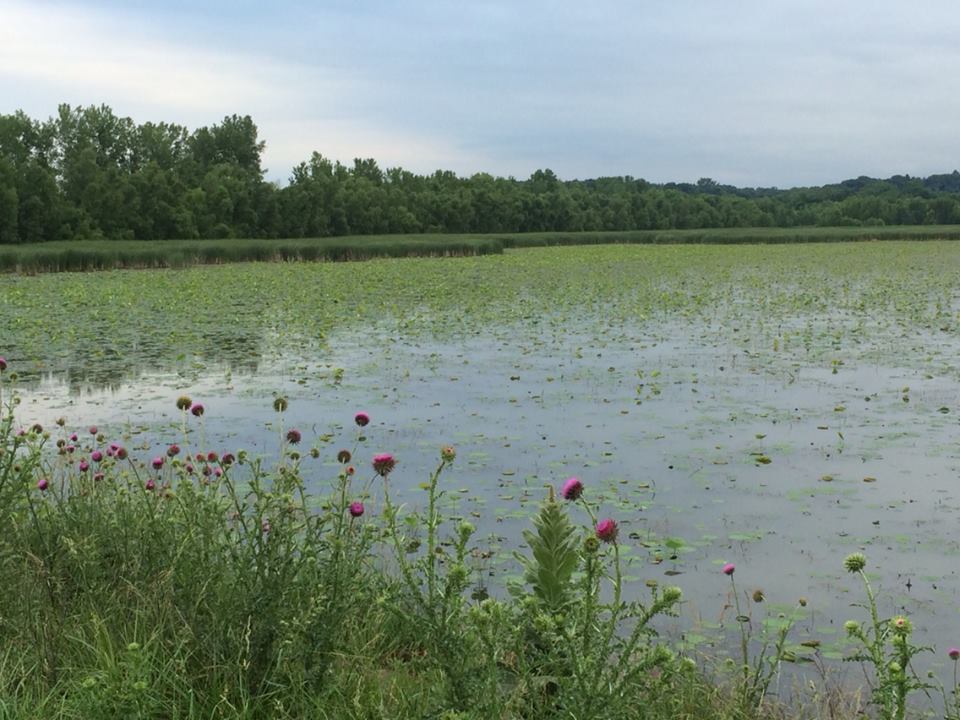
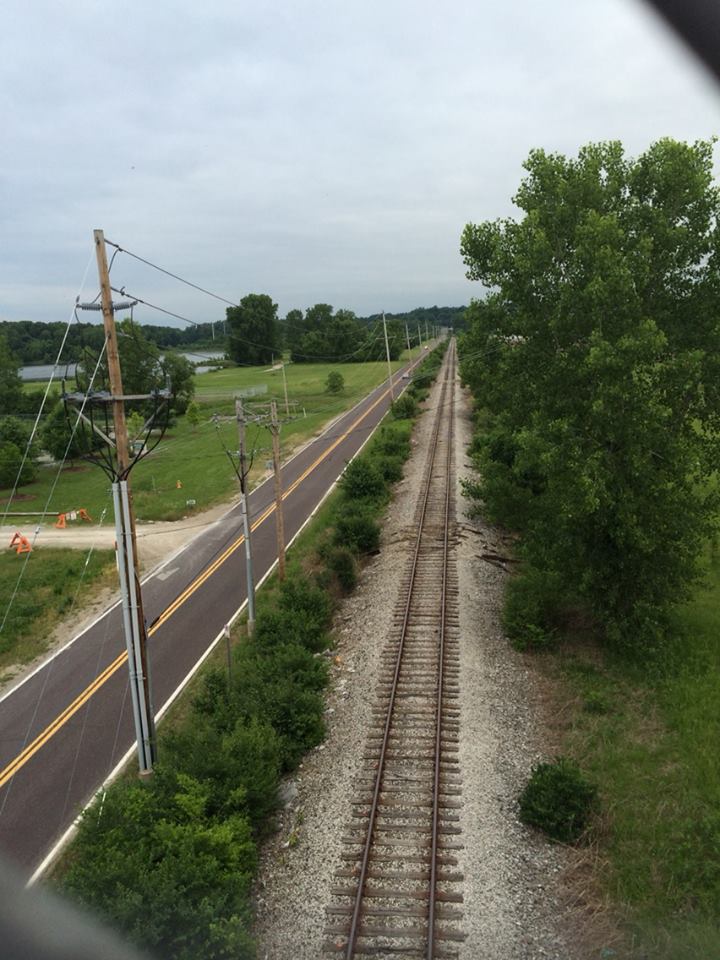
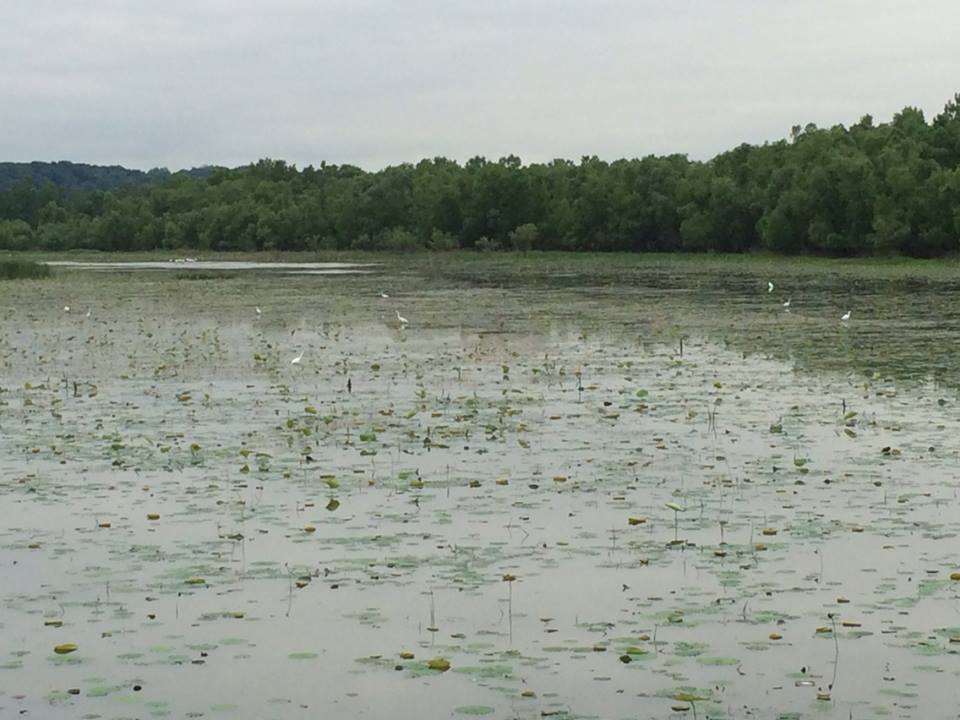
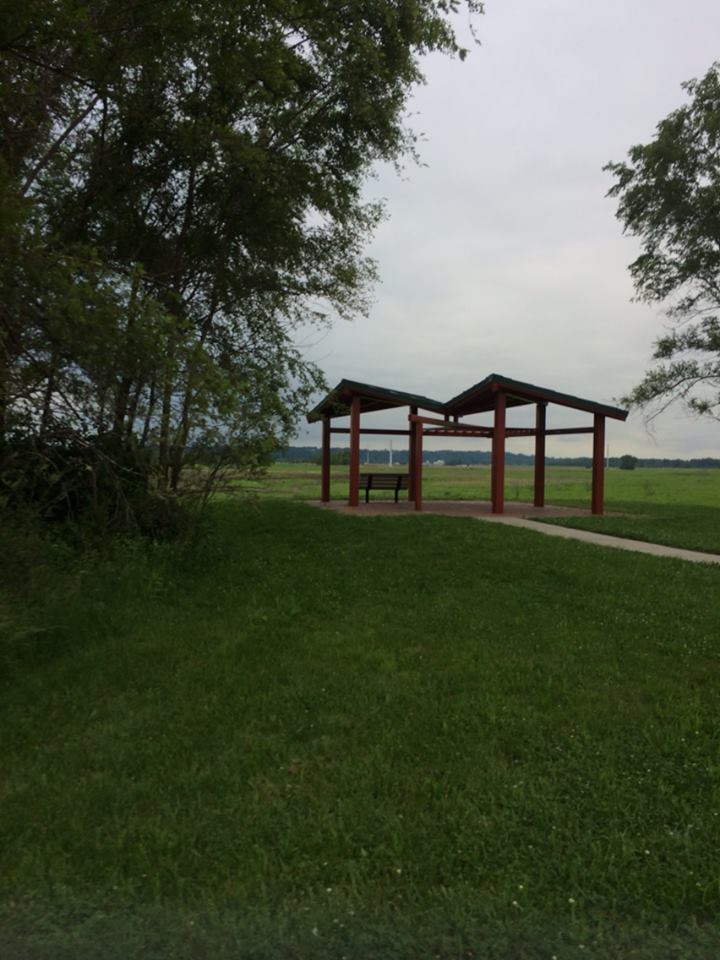
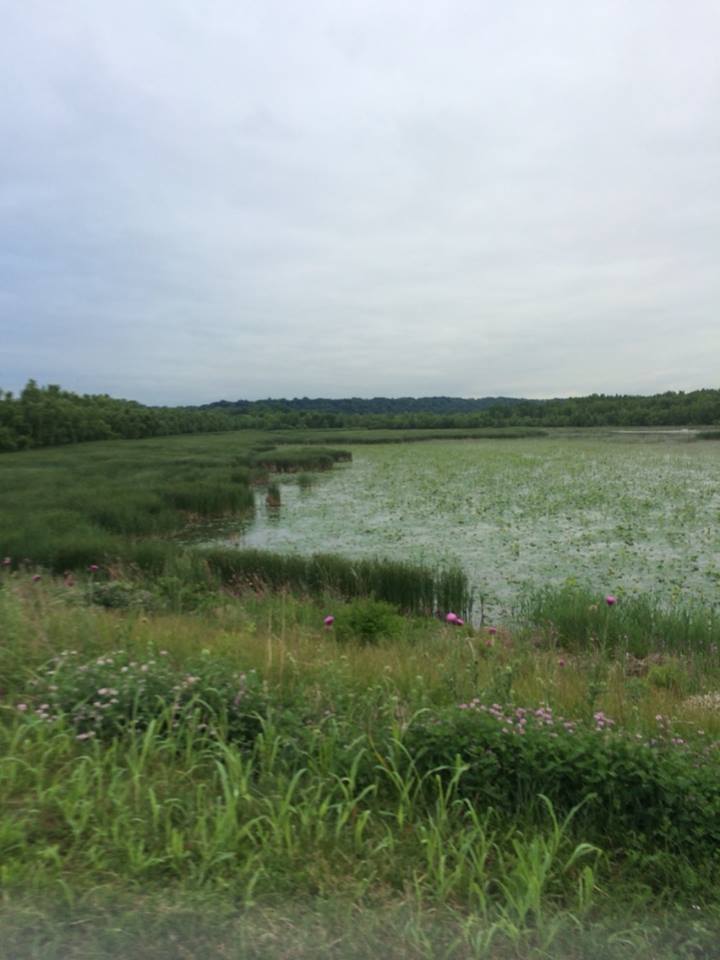
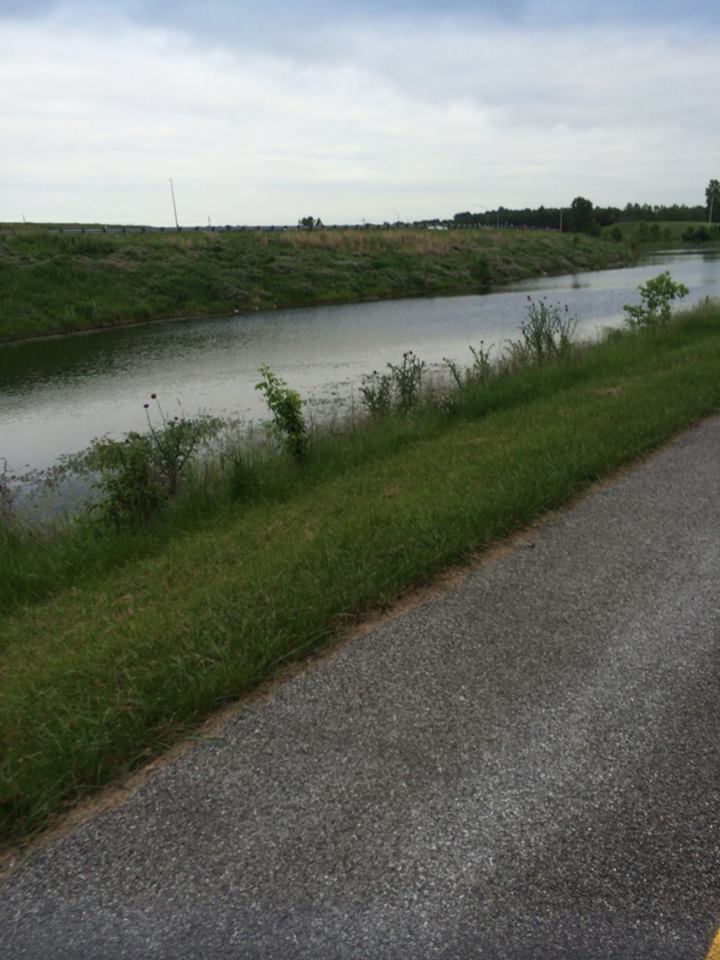
But for all the beauty and health benefits of biking, there were certainly downsides.
The very last part of the trail, a series of back roads between the Katy Trail Trailhead and my work, was always a little humiliating. It consisted of five steep hills with no shoulder or sidewalk. Pick up trucks by the dozen would blast past me, sometimes swerving at the last minute to avoid hitting me as they crested a hill. I nearly always had to get off my bike and walk it up, ride it down, walk it up, ride it down. It took me about a month to stay on my bike the entire time.
Of course, St. Louis summers being what they are meant I would show up to work sweaty and disgusting. I usually arrived before my coworkers and would take a few laps around the air conditioned office before ducking into the bathroom with my post-biking supplies:
- Deodorant
- Dry shampoo
- Face wash
- A change of clothes
By the time my coworkers arrived, I felt mostly normal. Luckily it was a small office and everyone was supportive of my weird goal, even my office-mate I shared the room with.
Biking home was always more relaxing–if sometimes exhausting. Since I didn’t have a car and all my coworkers lived in St. Charles, my only choice was to bike home, regardless of how sore or tired I felt. One time I really screwed myself over when I forgot I had a doctor’s appointment in the middle of the day. Luckily a coworker let me borrow their car. It also meant that I was stuck at work for lunch or tagging along with a coworker. Since St. Charles is mostly highways, I didn’t feel comfortable biking anywhere in town.
I biked to work pretty consistently for about three months, then the habit petered out.
Like many failed resolutions, there were a lot of factors at work:
- The midsummer Missouri heat just got too unbearable.
- I never found a good way to bike the last two thirds of the ride and never felt confident enough to attempt the full commute again. Unlike the the Katy Trail connector trailhead, there weren’t a lot of places to park all day for free.
- A new coworker moved in down the street from me and he agreed to carpool to work. Sleeping in an hour later and getting home an hour earlier was just too good to pass up. Plus it led to one of the best friends I’ve ever had.
Even though I never successfully biked from home to work, I’m still proud of what I accomplished that summer.
Biking everyday was enough of a novelty that it got a buzz going in my friend, family, and work circles. I like to think I got a little addicted to that look of you’re-crazy-but-I’m-still-impressed, which led me to eventually choose a zero waste lifestyle. Plus, I’m always thirsty for adventure and at the time I felt like there was nothing new to do in my hometown. Choosing something as simple as biking to work showed me that I didn’t even know what adventures lay beneath the surface of my daily commute.
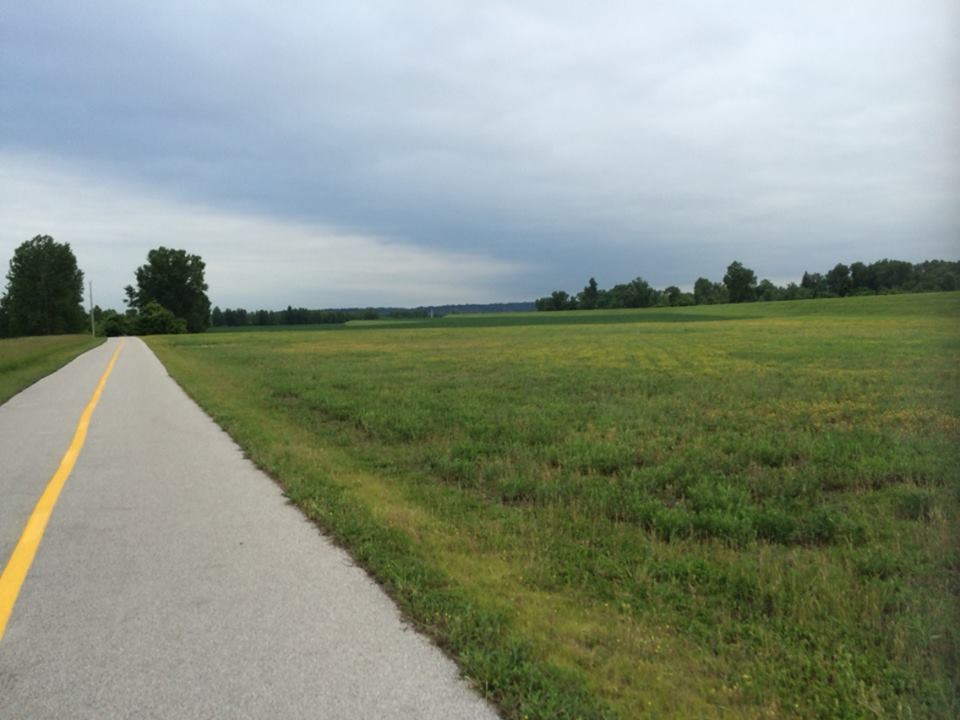
I currently live in the greater Chicago area (30 minutes by car to Wisconsin, so closer to WI than Chicago), and would love to bike to work more often than the once-per-week I aim for in the summer months. But with a 17-mile one-way bike commute (about an hour, at my fitness level and on these extremely-flat Chicacoland roads and trails, but so annoying that the driving commute is just under 10 miles), and two kids to pick up from school, once a week is the most I can reasonably accomplish.
Kudos on learning how to incorporate biking into your commute in the Midwest, though! It’s definitely an easier habit to plan for when one is still looking for a home, rather than a habit to take up when you didn’t choose your habitation based on access to bike trails and bike-friendly roads.
Those are still great goals! Every little bit counts towards reducing your carbon footprint. Just do what’s realistic for you 🙂
I hope that now that you live in Seattle you’ve noticed all city buses have bike carriers on the front! Some bus park & ride lications also have bike lockers you can rent. You don’t even need a bike if you want to use the Lime Bikes and other bikes you can rent by cell phone app. Are these programs common in other cities now? The idea is common in China and the Netherlands.
Hi Janine. I don’t think these programs are common in other cities, especially in the Midwest, but I think the idea is spreading–albeit slowly. Check out my blog about why I moved to Seattle. I think it does a good job of talking about the social and institutional differences between coastal cities and Midwestern cities in America.